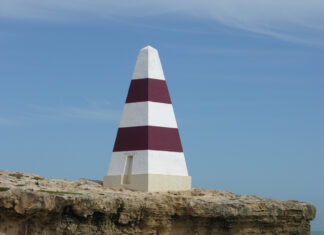ONE of the great challenges which has dogged City Council during the past 50 years or more has been the main street.
Probably more than any other central issue, the main street or the CBD area near Commercial Street has thrown up numerous debates and controversies.
Down through the years the issues have been well documented, such as parking meters, which not only brought down several councillors who were keen to introduce them but allowed Don McDonnell, Mount Gambier’s longest serving mayor, to be elected to council on a “no parking meter” ticket.
Then there was the debate, which still exists today, whether the main street should be a mall, one-way, angle parking or no parking at all.
More recently the focus has been on vacant shops and how to regenerate shopper interest.
Despite the controversies and debate over what was best for the main street, it still managed to survive – somehow.
Remember when Coles and Woolworths had Variety Stores, as they were called, in the Main Street – Coles just west of Ripley Arcade and Woolworths where Chapman’s Newsagency is now.
With grocery stores such as Moran and Cato, Rogers, McGowans and others, shoppers either carried their shopping home in string bags or paid a little extra for home delivery – that was the type of service provided.
The main street was “bubbling” with activity.
Then Woolworths and Coles moved into the supermarket business with Woolworths building the site now occupied by The Border Watch before moving again in the 1980s to its site in Commercial Street East.
In 1986 Coles joined Kmart at the new complex in Helen Street and with these changes there were some challenges for the main street retail business.
Tom The Cheap came and went, as did department stores such as Hustlers (later Gem Stores), Cox Bros (later Cox Foys) Fidler and Webb and a range of fashion shops, but the main street hub somehow maintained a strong influence on city retail trade.
When Marketplace was built, a second Woolworths chain opened and while it attracted neighbouring township shoppers to the city the number of vacant shops in the main street and shopping centres started to increase.
Some of that was due to hefty rent, but there was another shadow cast over the local retail sector when online shopping started to make an impression.
This is the great challenge for every government and council in Australia as each week jobs go because of shop and business closures or where technology has replaced jobs.
Online trading has started to increase and civic leaders – mayor Andrew Lee and chamber of commerce president Lynette Martin OAM, have expressed concerns about the Main Street’s future.
To their credit, council and the chamber have worked together on some initiatives to improve the main street “facade” and their recent actions to invite ideas are aimed at helping create a better shopping environment.
How to fix the main street problem is probably as important right now as any other local issue.
The council and the chamber are prepared to face the task of making it more attractive to shop in the main street – making it a shopping experience – but how to go about this is why they are seeking ideas for discussion and debate.
Interestingly, this week retail consultant David West was guest speaker at a Chamber breakfast and he said shopping trends had gone from outdoors (main street) to indoors (shopping centres) and shoppers are now returning or wanting the outdoor “experience”.
Marketing, developing a “brand” and taking advantage of the diversity of shopping that exists in a main street are just a few of more than 100 tips that helped small and large cities around the world improve their CBD.
But it needs a team effort approach and leadership and as one overseas mayor said the city kept hoping for a “white knight” to come marching down the street when it was the key stakeholders who needed to solve the problem.
Success will not come without all retailers working together.
Challenges sometimes bring out the best in us.





